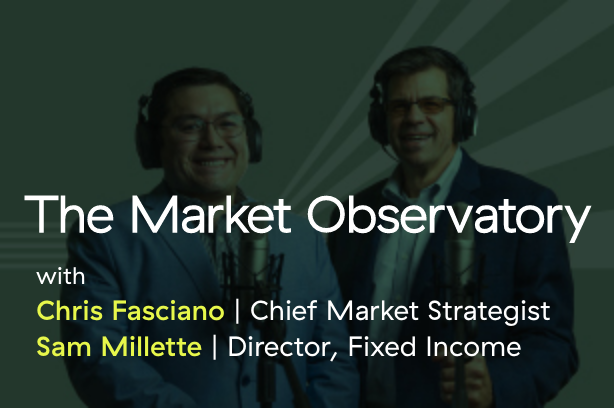After yesterday’s terrible performance—with U.S. stock markets down more than 2 percent—worries are starting to rise. Combined with last week’s declines, it looks like we may be seeing the end of the bull market. So, is it time to panic?

May 14, 2019
After yesterday’s terrible performance—with U.S. stock markets down more than 2 percent—worries are starting to rise. Combined with last week’s declines, it looks like we may be seeing the end of the bull market. So, is it time to panic?
Last week’s data was focused on prices, although we also got an update on the trade balance. This week is a busy one, including looks at retail sales, consumer confidence, and the housing sector.
May 10, 2019
It’s time for our monthly look at market risk factors. Just as with the economy, there are several key factors that matter for the market in determining both the risk level and the immediacy of the risk. Although stocks have largely recovered from their recent pullback, given valuations and recent market behavior, it is useful to keep an eye on these factors.
May 9, 2019
After a difficult quarter, April’s data showed signs of meaningful improvement. Job growth bounced back, easing a major concern. Plus, consumer confidence improved, which should help growth going forward. On the other hand, business confidence dipped further, and the yield curve remains close to a risk level.
May 8, 2019
When we see sharp drawdowns in the stock market like we have over the past couple of days, it’s natural to worry it might be the start of something much worse. Indeed, it could be. Odds are, however, that this will be a brief pullback followed by a rebound.
April was the month that everything turned around . . . we hope. Job growth kicked back to very high levels, taking the unemployment rate to a 50-year low. Consumer confidence rebounded in a big way. And, perhaps as a consequence, retail spending also came in well above expectations. On top of all that good news, economic growth came in well above expectations for the first quarter—even as the Fed stepped back from its hawkish stance, leaving interest rates unchanged and likely to remain that way.
Last week was a very busy one for economic data, with a number of key reports. This week’s data is focused around prices, but there will also be an update on the trade balance.
May 3, 2019
On the face of it, this morning’s strong jobs number should elicit a full three cheers. Job growth came in at 263,000. This result was up from last month’s downwardly revised 189,000 and well above the expected 190,000. Looks like a home run, right? In fact, when you dig into the details, the news (while still good) is not nearly as good as the headline suggests. That is why I am subtracting a full cheer from the headline.
May 2, 2019
April was another great month for the financial markets, as U.S., emerging, and developed markets were all in the green. Although there were concerns about a slowdown at the end of last month, first-quarter economic growth actually came in well above expectations. Plus, consumer spending picked up, consumer confidence bounced back, and business investment came in stronger than expected.
May 1, 2019
Today we will take a look at an old investing adage: “sell in May and go away.” It is supposed to reflect the idea that market returns over the summer and fall are worse than those in the winter and spring. Under this theory, you should sell all your stocks in May and then buy them back in November.

Episode 13
November 19, 2025
Episode 12
October 14, 2025
Episode 11
September 10, 2025
Episode 10
August 13, 2025
Episode 9
July 23, 2025
The information on this website is intended for informational/educational purposes only and should not be construed as investment advice, a solicitation, or a recommendation to buy or sell any security or investment product. Please contact your financial professional for more information specific to your situation.
Certain sections of this commentary contain forward-looking statements that are based on our reasonable expectations, estimates, projections, and assumptions. Forward-looking statements are not guarantees of future performance and involve certain risks and uncertainties, which are difficult to predict. Past performance is not indicative of future results. Diversification does not assure a profit or protect against loss in declining markets.
The S&P 500 Index is a broad-based measurement of changes in stock market conditions based on the average performance of 500 widely held common stocks. All indices are unmanaged and investors cannot invest directly in an index.
The MSCI EAFE (Europe, Australia, Far East) Index is a free float‐adjusted market capitalization index that is designed to measure the equity market performance of developed markets, excluding the U.S. and Canada. The MSCI EAFE Index consists of 21 developed market country indices.
One basis point (bp) is equal to 1/100th of 1 percent, or 0.01 percent.
The VIX (CBOE Volatility Index) measures the market’s expectation of 30-day volatility across a wide range of S&P 500 options.
The forward price-to-earnings (P/E) ratio divides the current share price of the index by its estimated future earnings.
Third-party links are provided to you as a courtesy. We make no representation as to the completeness or accuracy of information provided on these websites. Information on such sites, including third-party links contained within, should not be construed as an endorsement or adoption by Commonwealth of any kind. You should consult with a financial advisor regarding your specific situation.
Member FINRA, SIPC
Please review our Terms of Use.
Commonwealth Financial Network®